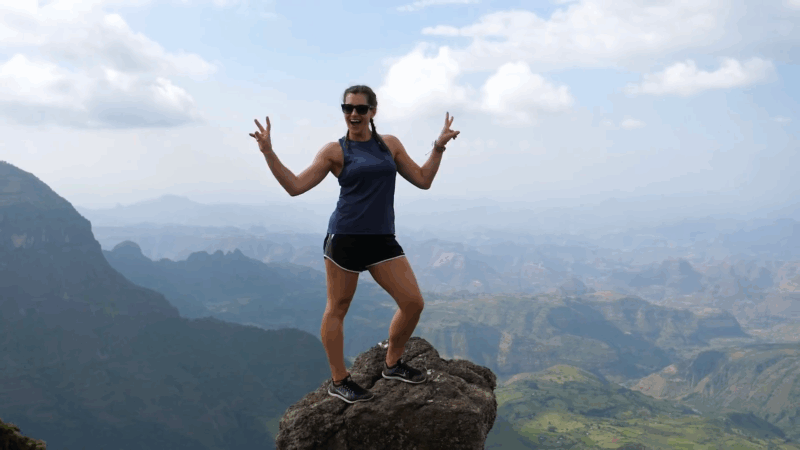Ethiopia promises a bold and thrilling destination for adventurous family road trips in 2025.
Home to highlands, deserts, ancient civilizations, and vibrant cultural traditions, it opens the road to both discovery and connection.
Parents looking to blend adventure with educational experiences can find endless options tailored to all age groups.
Families today crave meaningful and immersive travel. Road trips offer freedom to set your own pace, adapt to your children’s needs, and discover off-the-grid experiences without the restrictions of rigid itineraries.
Ethiopia, with its dynamic topography and rich traditions, gives families an ideal setting for such flexible exploration.
Planning Your Ethiopian Family Road Trip

Preparing for a family road trip across Ethiopia takes more than excitement and a destination list. Travel rhythm, comfort, and smart budgeting play a major role in how enjoyable and sustainable the experience becomes.
Families benefit from a clear idea of their limits, especially when traveling with kids of different ages.
Two critical elements form the foundation of a successful plan: setting realistic expectations and managing your budget.
Setting Expectations
Clarity around pace and flexibility is the first step toward a smooth road trip. Unlike short getaways, road trips test:
Family dynamics influence everything from daily drive length to where and how long to stop.
Two to four hours of driving per day generally works for most families. That allows time for rest, meals, short hikes, and spontaneous cultural encounters. Attempting to fit in too many destinations may cause unnecessary fatigue.
Fewer, well-planned stops often offer more meaningful engagement.
Toddlers and younger children typically need more breaks and shorter drive days. Older kids and teens may tolerate longer hours on the road, especially when entertained by music, scenery, or road games.
Adjusting plans to suit these age-related needs avoids frustration and helps everyone enjoy the experience.
Quick tips to manage expectations:
- Limit driving to 2–4 hours daily
- Focus on quality of stops, not quantity
- Choose rest-friendly lodging with outdoor areas
- Tailor schedule to your children’s stamina
- Build in time for spontaneous discoveries
Budgeting for the Road
Effective budgeting creates freedom. Ethiopia offers a wide range of options when it comes to transport, lodging, and meals.
The biggest expense is often vehicle-related. Hiring a 4×4 with a driver offers local insight and less stress, while self-driving suits experienced travelers who want full control.
Fuel prices are relatively low compared to global standards, but distances can stretch budgets over time.
Guesthouses and eco-lodges offer affordable stays that often include home-cooked meals and welcoming hosts. These lodging choices add personal value without breaking the bank.
Traveling on a budget doesn’t mean sacrificing depth. Prioritizing certain regions and experiences helps allocate funds wisely.
A mix of cultural sites, nature spots, and local festivals brings balance and prevents overspending.
Unplanned expenses like snacks, souvenirs, and gratuities should also be considered.
Key budgeting considerations:
- Compare the costs of self-driving vs. driver-guided
- Use guesthouses or eco-lodges for affordable comfort
- Stick to a core list of must-see sites
- Set aside funds for unplanned extras
- Fuel up in major towns to avoid shortages in remote areas
Best Time to Go
View this post on Instagram
Timing shapes the outcome of a family road trip across Ethiopia.
Choosing the right season ensures not only beautiful views but also smoother logistics, safer travel conditions, and a more rewarding experience for both adults and children.
Families should consider not just the weather but also how local events and cultural celebrations can enhance the overall trip.
Seasonal Overview
Dry Season (October to May):
- Clear skies and low rainfall
- Easier road access across both northern and southern routes
- Comfortable temperatures in the highlands
Rainy Season (June to September):
- Lush greenery, but with potential road closures and muddy trails
- Less predictable driving conditions, especially in rural zones
Dry months between October and May present the most practical window for family travel.
The weather during this period supports activities such as hiking in national parks, long drives across historic routes, and lakeside picnics without interruptions due to flooding or downpours.
Remote areas like the Simien Mountains, Danakil Depression, and Omo Valley become more manageable.
Road surfaces dry out, and travel disruptions decrease, helping families stick to their itineraries without stressful detours.
Transport & Safety

Traveling across Ethiopia with family requires careful attention to both mobility and protection.
Routes vary in terrain, quality, and accessibility, making thoughtful transport choices essential.
Families should consider vehicle type, driver experience, and tools for navigation.
Transportation Options
How a family chooses to move around Ethiopia directly affects the rhythm and comfort of the trip. Options include hiring a local driver-guide, self-driving, or using minibuses for group travel.
Each has advantages based on family size, experience level, and preferred level of involvement.
Hiring a driver-guide removes pressure from navigating unfamiliar roads. A local driver brings road familiarity, language support, and knowledge about regional customs. With children in the vehicle, having someone focused entirely on the road is invaluable.
Families confident in off-road travel may opt to self-drive. A 4×4 vehicle is non-negotiable for those taking this route.
Roads outside city centers often lack signage and may transition suddenly into rough, unpaved paths. Conditions worsen during seasonal rains.
Minibuses provide another practical solution for large families or groups. More seats, luggage room, and flexibility make them a good fit for extended routes with multiple stops.
Navigation tools play a crucial role. Relying on GPS alone can cause problems in rural areas. A GPS tracker for a car adds an extra layer of safety by allowing families to track their route, share location with others, and recover the vehicle in case of emergencies.
Transport Tips:
- Hire a local driver for safer navigation and cultural insight
- Choose a 4×4 vehicle for remote or uneven roads
- Use a GPS tracker for car to monitor routes and locations
- Carry printed maps and offline apps like Maps.me as backups
- Minibuses suit large groups needing space and flexibility
Safety Tips
# Discussion on Traffic & Road safety in ethiopia!
Let’s unite for safer roads and fewer traffic accidents in Ethiopia! 🛣️
Together, we can make a difference!
– Collaborate for community safety !@AlemuSimeFeyisa@BareoH90556@DhengeBhttps://t.co/mRx9gfOhHf— Ministry of Transport and Logistics (@MoTLogestics) June 15, 2024
Road safety across Ethiopia varies significantly between regions. While major highways are usually paved, roads in southern and remote northern areas may feature potholes, gravel, and animals crossing without warning. Staying alert and patient is critical, especially with children in the back seat.
The driving habits of others can present risks. Drivers may pass in blind spots, ignore speed limits, or drive at night without proper headlights. For these reasons, families are advised to travel during daylight and avoid nighttime driving, particularly outside urban areas.
Animals and people frequently appear on the road in rural zones. Children often enjoy spotting wildlife such as donkeys or baboons, but these encounters require full adult attention and slow speeds.
Digital tools should never replace physical backups. While navigation apps help, rural signals drop frequently. Printed itineraries and saved directions can prevent confusion or delays. Keeping a power bank charged at all times ensures devices remain operational.
Safety Recommendations:
- Avoid nighttime driving, especially outside cities
- Stay within safe speed limits and expect road surprises
- Watch for livestock, pedestrians, and wildlife
- Rely on a GPS tracker for car and supplement with paper maps
- Keep phones and navigation devices fully charged
Family-Friendly Routes in Ethiopia
Planning a road trip with kids requires more than just selecting scenic stops.
Routes must align with attention spans, energy levels, and interests across age groups.
Some families want to focus on historical education, others prioritize wildlife, and some prefer a blend of both. Ethiopia offers multiple routes that cater to these goals.
The Historic North Route (14–21 days)
For families eager to experience Ethiopia’s ancient past, the Historic North Route delivers a balanced mix of education, scenery, and adventure.
Starting in Addis Ababa and looping through Bahir Dar, Gondar, Simien Mountains, Lalibela, and Axum, the route offers deep cultural significance and relatively comfortable driving segments.
Stops along the way immerse families in stories of kings, saints, and civilizations.
Gondar’s castles look straight out of a fairy tale and allow kids to imagine royal life centuries ago. Lalibela’s rock-hewn churches, carved into volcanic rock, spark curiosity and awe, especially when approached through winding tunnels and courtyards.
Simien Mountains add a nature-based component with chances to spot gelada monkeys and hike gentle trails suitable for kids.
Driving segments typically range between three to five hours. Roads are mostly paved, with a few rough stretches that a 4×4 handles well. Accommodations include lodges, mid-range hotels, and local guesthouses that welcome families.
- Route Highlights: Addis Ababa, Bahir Dar, Gondar, Simien Mountains, Lalibela, Axum
- Key Features: Castles, UNESCO churches, mountain hiking, kid-friendly history
The Southern Adventure Route (10–14 days)
@addishiking A trip to south. #addishiking #trekking #MountGughe ♬ original sound – Addis hiking
Families with older kids or teens looking for wildlife and cultural experiences may find the Southern Route irresistible.
Starting again in Addis Ababa, the route flows through Lake Ziway, Arba Minch, Jinka, and the Omo Valley, offering tribal encounters, lush forests, and scenic lakes.
The route introduces travelers to Ethiopia’s incredible cultural mosaic.
Visits to local tribes in the Omo Valley provide insight into body art, traditional ceremonies, and ancient lifestyles. Respectful engagement through a knowledgeable guide ensures cultural sensitivity while offering kids a meaningful human experience.
Arba Minch features Nechisar National Park, boat rides on Lake Chamo, and close encounters with hippos and crocodiles.
Drive times are longer and roads can be rougher than in the north, making it more suitable for families with older children who can handle extended drives and rustic accommodations. Eco-lodges and community-based stays add a layer of authenticity to the adventure.
- Route Highlights: Addis Ababa, Lake Ziway, Arba Minch, Jinka, Omo Valley
- Key Features: Tribal culture, wildlife, boat safaris, teen-friendly activities
Simien Mountains & National Parks (7–10 days)

Families seeking outdoor exploration and animal encounters will love focusing on Ethiopia’s national parks, particularly the Simien Mountains.
Known for high-altitude trekking and breathtaking views, the park offers accessible trails that children can manage and wildlife rarely found elsewhere, such as the Ethiopian wolf or Walia ibex.
Multi-day trips often include overnight camping or stays at mountain lodges. While basic, many of these spots provide comfort and safety for adventurous families. Guided treks introduce young travelers to eco-systems, geology, and conservation in a direct and active way.
For families wanting to include other parks, options like Bale Mountains or Awash National Park are viable. These locations offer easier drives for shorter itineraries while still delivering biodiversity, volcanic features, and cultural exposure.
- Route Highlights: Simien Mountains, Bale Mountains, Awash National Park
- Key Features: Wildlife, family hikes, camping, immersive nature experiences
Packing & Preparation
Preparation plays a major role in the success of a family road trip through Ethiopia. Layers are the key: lightweight shirts for daytime, warm jackets for early mornings and high elevations, and waterproof gear for sudden rain in southern regions.
Long drives require a solid comfort and entertainment strategy. Pillows, neck rests, sunshades, and travel snacks help younger kids rest and recharge between stops.
Tablets with offline games or movies, coloring books, audiobooks, and card games offer relief for both parents and kids. Trash bags, wet wipes, and hand sanitizer earn their place on the packing list.
Health prep is equally important. Families should consult travel clinics at least six weeks before departure for vaccinations and malaria prevention where needed.
Bringing a well-stocked first-aid kit that includes remedies for motion sickness, cuts, diarrhea, and fevers avoids unexpected clinic visits. Travel insurance with coverage for medical evacuation adds peace of mind.
Spare batteries, power banks, extra memory cards for cameras, and offline navigation tools such as Maps.me or printed maps are worth their weight in gold.
Summary
@miketravelers4510 Visit the gift land of Ethiopia Land of origins The travelers car Beautiful family tour #photographer #landscape #travelers #onelove #africantiktok #adventure #sunrise #travelethiopia #ethiopiantiktok #viraltiktok #viralvideo #familytour #omovalley #travelers ♬ original sound – Amen___ethio
Ethiopia offers families a travel experience that stays with them long after the road ends.
It combines heritage, adventure, and natural beauty in ways that inspire curiosity in young minds and rekindle wonder in adults.
Parents find opportunities to teach, connect, and grow alongside their children through moments that no screen or textbook can replicate.
Meals in village homes, music under the stars, and dusty roads lined with curious faces become the threads of lasting memories.
